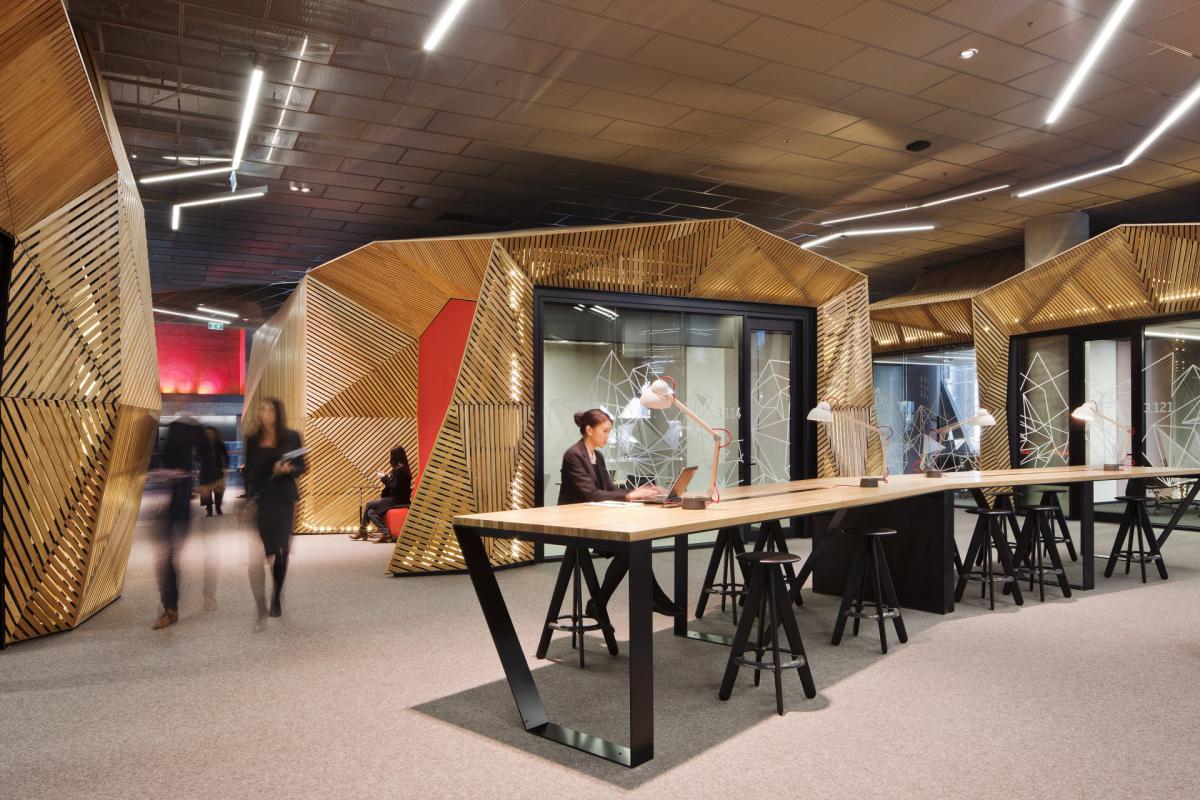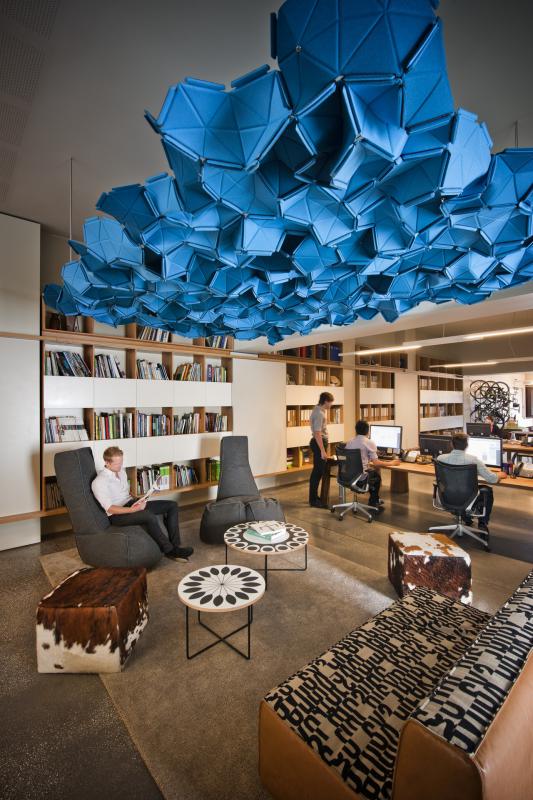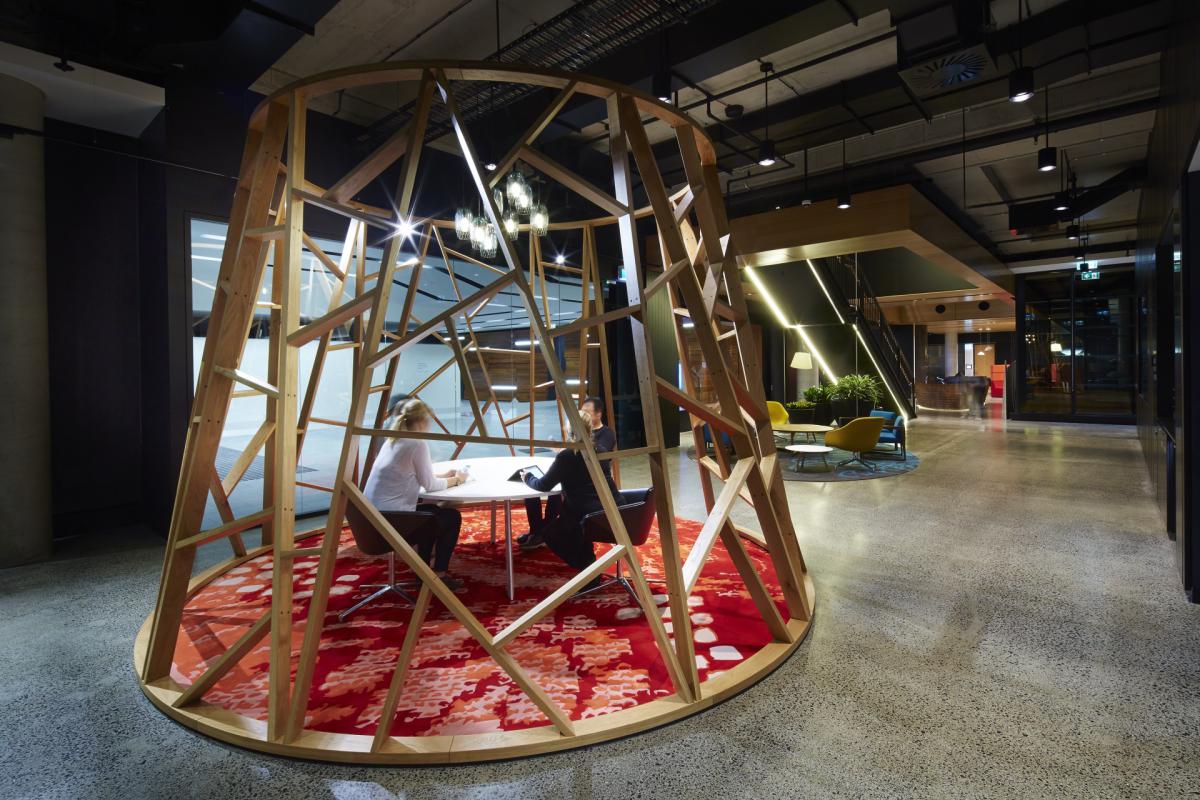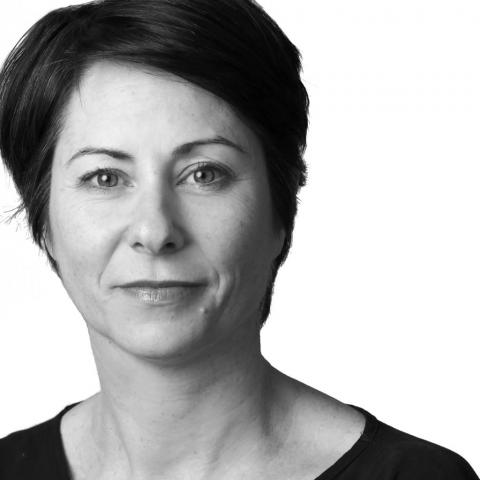
When I’m asked how to increase productivity in the workplace, my first question is always: “What type of productivity? The pump-it-out-faster type or the make-great-things-happen type"?
Most businesses now are definitely targeting the latter. In traditional process-driven businesses, productivity and efficiency are simple to measure, but in today’s economy, businesses can’t survive without constant innovation and a focus on creativity.
 Workplace designers must provide the environment and the tools that foster creativity in businesses and people—this requires a complete rethink of our workplaces as creative spaces.
Workplace designers must provide the environment and the tools that foster creativity in businesses and people—this requires a complete rethink of our workplaces as creative spaces.
It hasn’t escaped anyone’s attention that we are living in a time of technology revolution. This technology revolution means that data is always at our fingertips. “Remembering stuff” is no longer necessary, everything we need to know is in my pocket. And in a world where the answer is always at our fingertips, we have learnt that the way to set ourselves apart is not through rote learning but through creative thinking and strategic problem-solving.
The move for many organisations is from a structured hierarchy that prioritises bureaucracy over innovation to a team based organisation that provides freedom within the boundaries of a clear and shared vision. Organisations are largely now aware that business is a series of projects, not just business-as-usual process. Many organisations have found the best ways to come up with new ideas—but only today’s leaders have figured out how to define it, test it, develop and implement. They have discovered how to give innovation speed to market.
We can’t deliver innovation the old way, that is: think of something great, spend six months writing a business case, present it at the next board meeting, wait for approval, secure funding, now start planning, lease some space, move the team in, start working. By the time you do this, suddenly you are 12 months behind your competitor who has just launched a similar product.

These days it all has to happen at once—the world is too fast for linear processes. We need incubators to take ideas and grow them quickly and nimbly—selecting only the best and developing them.
So how does this translate to design of the physical workplace? The first fundamental change is that we need more space for creating and less space for processing. But a bigger question is: what does space for creating look like?
Well, it’s diverse. It’s not just an incubator lab covered in sticky notes and whiteboards—but a diverse set to suit diverse needs. It can be quiet space for individual thinking, informal space—for talking over coffee—the options are endless. So workplaces are no longer focused on a desk for everyone and a meeting room for the bosses. The desk is in fact less and less relevant – the other spaces are more and more useful.
The characteristics of a “creative workplace” are:
- All about people focused things;
- Giving people freedom to choose—where and how they work;
- Letting people have some hand in creating their environment—vanilla homogenous no longer cuts it;
- A space that allows for natural collaborations—spontaneous physically and virtually;
- An organisation that trusts and empowers—and an element of this can be achieved through the workplace design;
- An element of fun—and definitely socialisation—a blurring of the boundaries of work.
A creative organisation expects and allows change, promotes flexibility and individuality, and operates through projects not hierarchical structure. Enabling a creative organisation requires: trust and empowerment of staff; managing to outcomes (not line of sight), mobility and non-ownership of space.
The physical needs to be right—but so does the behavioural or social. There needs to be a culture of collaboration (not just meeting) and a management style that encourages it. Failure needs to be allowed, and time for distractions created. Interactions need to be organic and whole of organisation – cross-pollination of ideas across business units most often happens in chance encounters.
It’s no longer good enough to be “collaborative” and “creative" and "innovative” around the edges. Creativity won’t happen in a room on level 5 just because it has bean bags in it. We need to make a holistic change to our approach. Creativity has to be at the centre. And productivity measured by the success of our creations. ![]()

